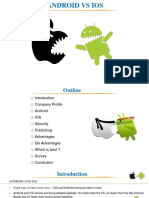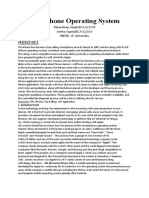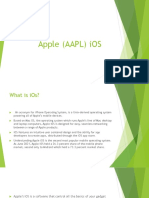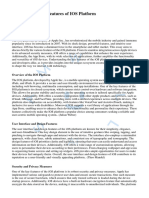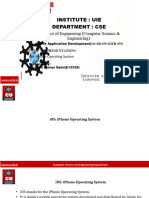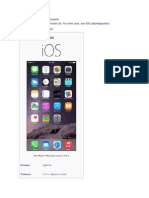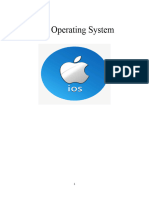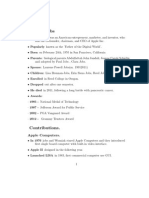0% found this document useful (0 votes)
120 views8 pagesIntroduction To IOS
The document provides an introduction and overview of the iPhone Operating System (iOS). It discusses that iOS powers Apple devices like iPhones, iPads, and iPods. It then covers the history and development of iOS, its key features like the intuitive user interface and app ecosystem, and unique applications such as AirDrop and Siri. The document also describes the structure and advantages and disadvantages of iOS.
Uploaded by
S.M. MahdiCopyright
© © All Rights Reserved
We take content rights seriously. If you suspect this is your content, claim it here.
Available Formats
Download as PDF, TXT or read online on Scribd
0% found this document useful (0 votes)
120 views8 pagesIntroduction To IOS
The document provides an introduction and overview of the iPhone Operating System (iOS). It discusses that iOS powers Apple devices like iPhones, iPads, and iPods. It then covers the history and development of iOS, its key features like the intuitive user interface and app ecosystem, and unique applications such as AirDrop and Siri. The document also describes the structure and advantages and disadvantages of iOS.
Uploaded by
S.M. MahdiCopyright
© © All Rights Reserved
We take content rights seriously. If you suspect this is your content, claim it here.
Available Formats
Download as PDF, TXT or read online on Scribd
/ 8













